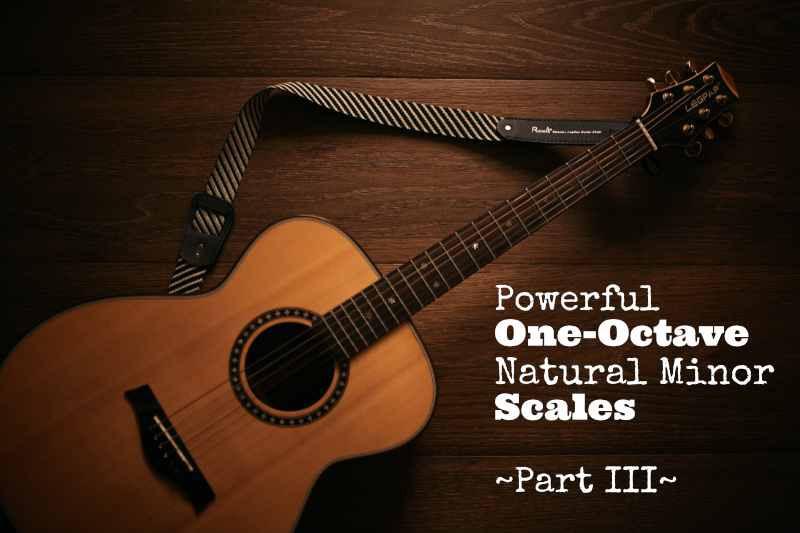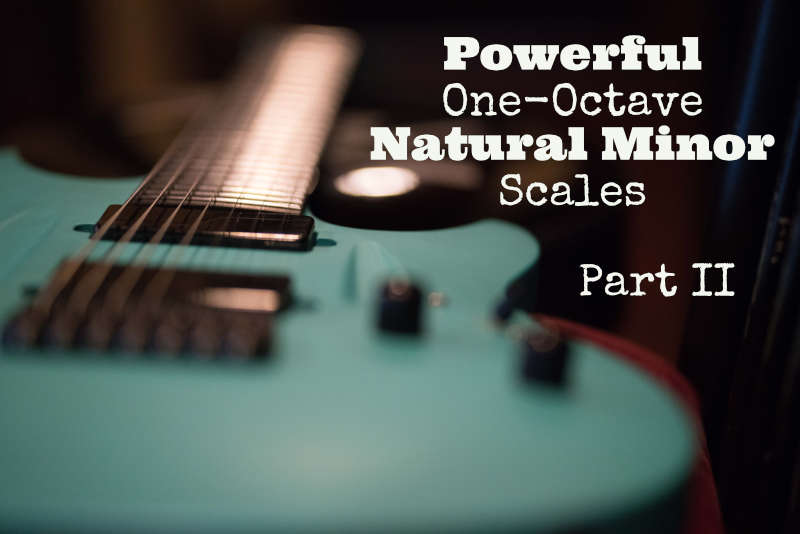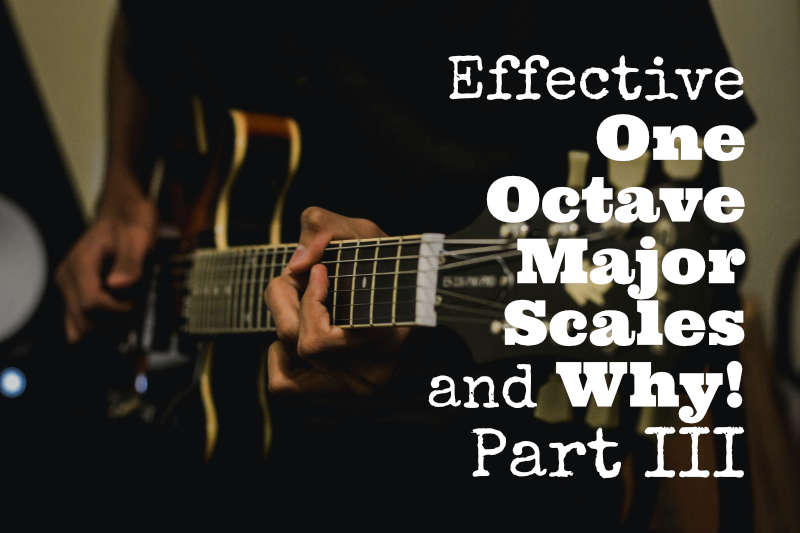
Good day my guitar friends, we’re in the middle of the One-Octave Natural Minor scales series and we continue with Part III.
In the previous lessons we practiced the scale patterns starting on the Low-E and A string and now we’re going to start with the root note on the D-string. We’re heading into the higher regions of the scale where most of the guitar soloing takes place, so the shapes are getting more relevant to your playing once you go up the strings.
If you just stepped into Part III of the One-Octave natural minor scale series you might first want to check out Part I and Part II.here are the reasons you want to learn this:
Summary One-Octave Natural Minor Scales
The one-octave natural minor scale makes it easy to recognize the shape, the structure, the notes and the intervals of the scale. Since it’s one octave they are a perfect start for beginners and will definitely create new insights for intermediate guitar players.
For anyone who’s into rock, blues and pop music the natural minor scale is a crucial scale, but you will also encounter the scale in many other styles as well.
Continue Reading



